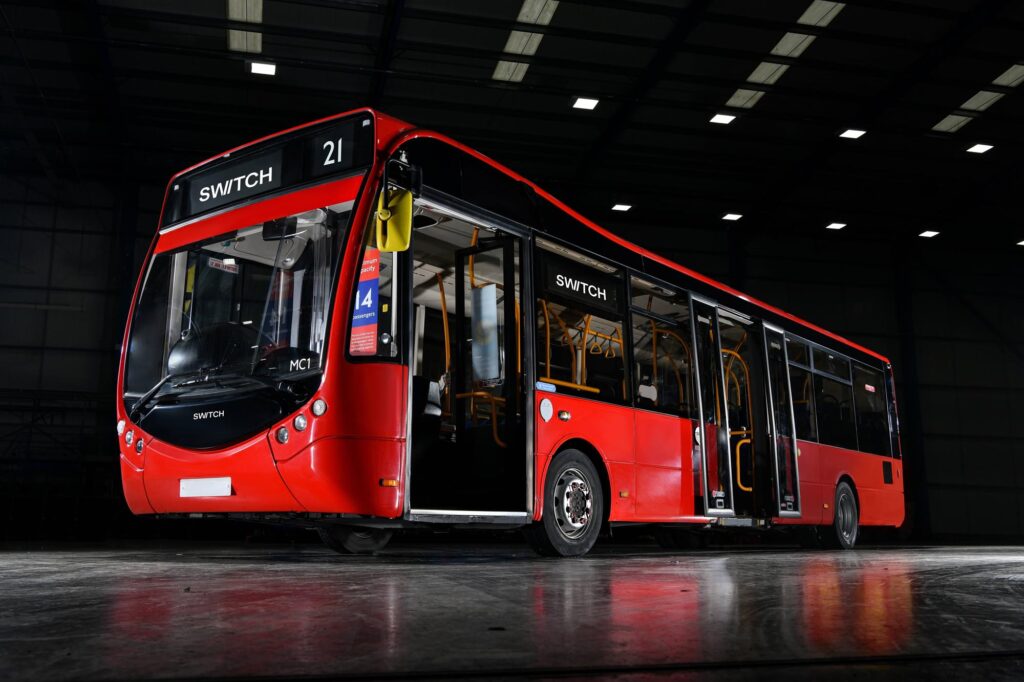By Rupa Nandy, Head, UITP India Regional Office

India is one of the fastest-growing economies in the world and recently became the most populous country globally. The country aims to reach net-zero carbon emissions by 2070, as pledged at COP 26 in Glasgow. This is a formidable challenge for a nation with a population of 1.4 billion. According to a recent report, road transportation accounts for 12% of CO2 emissions. Although this contribution is relatively small, the increasing mobility needs of this rapidly urbanizing country and rising energy demand could alter the future scenario. Public transport, which is a key decarbonizing strategy for any country, is currently inadequate in India.
One prompt and economical solution is the augmentation and scaling up of bus-based public transport systems. Buses are the largest mode of public transport in India. Compared to infrastructure-heavy rail-based systems, bus-based public transport systems are cheaper, offer greater operational flexibility, and have shorter development periods.
Despite past and recent initiatives to improve bus services across the country, benchmarks such as the number of buses per thousand people reveal that India only meets about one-third of the ideal metric. There are approximately 24 buses per 100,000 people, whereas the target should be around 60.
Current Trends in the Bus Sector in India
The bus sector in India has been undergoing significant transformation in recent years, driven by technological advancements, policy changes, and evolving consumer preferences. Some key trends include:
Electrification of Bus Fleets: There is a growing push towards electric buses to reduce carbon emissions and combat air pollution. State governments and private operators are increasingly investing in electric buses, supported by policies and incentives from both central and state governments.
Improved Infrastructure: There is a focus on developing better infrastructure to support modern buses, including dedicated bus lanes, bus rapid transit systems (BRTS), and upgraded bus stations. This aims to improve efficiency and reduce travel time.

Integration with Technology and Data-Driven Decisions: The adoption of technology is rising, with features like GPS tracking, real-time passenger information systems, and contactless payment methods becoming more common. Mobile apps for route planning and ticket booking are also gaining popularity. Data analytics is increasingly being used by bus operators and transit authorities to optimize routes, manage fleets more effectively, and enhance service delivery based on passenger demand and behavior.
Increased Involvement of the Private Sector and Public-Private Partnerships (PPPs): There is a trend towards forming public-private partnerships to improve bus services. These collaborations aim to combine public sector resources and oversight with private sector efficiency and innovation.
Growth of India’s Bus Sector
Currently, the bus sector is dominated by private buses. While public sector buses started early and have a substantial fleet today, they have not matched the growth of private sector buses. According to the Road Transport Yearbook 2019-19, there are about 152,000 public buses and 1,897,000 private buses registered in India as of 2019. These private buses include stage carriage buses, contract carriage buses, school buses, and staff transportation buses. Public sector buses comprised 31.7% of the total fleet in 1961, but only 7.4% in 2019. The private sector buses have shown tremendous growth in recent decades and now make up 92.4% of the total buses in the country. The bus segment has seen a compound annual growth rate (CAGR) of 3.27%.
The growth of the private bus sector to address public transport demand, school fleets, and staff transportation fleets has created employment opportunities and fueled economic activities related to transportation. This includes a boost to domestic bus manufacturing, maintenance, and ancillary services. Public buses, managed by State Transport Undertakings (STUs), focus on affordability by regulating fares, increasing reach, and catering to diverse travel needs, thereby boosting social and economic opportunities.
With a focus on electrification, India’s electric bus market is rapidly growing. As of February 2024, there are about 7,757 electric buses operational, up from just 3 in 2015. The number of electric buses in India is expected to increase fivefold in the next 2-3 years.
Bus Manufacturing Market
A study indicates that the stage-carriage bus industry in India is anticipated to reach a valuation of INR 104,000 crore by 2026, with a CAGR of 6.15% for State Transport Undertakings (STUs) and 7.19% for private buses.
India has several prominent bus manufacturers known for their diverse range of vehicles, including city buses, intercity coaches, and luxury buses. Major manufacturers include TATA Motors, Ashok Leyland, JBM, Volvo, Eicher Motors, Force Motors, Mercedes Benz, SML Isuzu, Bharat Benz (Daimler), and Olectra. These include homegrown brands as well as joint ventures with international companies. It is estimated that India’s current production capacity across all manufacturers is about 50,000 units per year.
Manufacturing Incentives in India for Buses
Manufacturing buses in India offers several compelling incentives and opportunities, driven by government policies, market demand, and economic factors. Government support and policies include:
- Subsidies and Grants: The Indian government offers subsidies and financial support under various schemes to promote public transportation and reduce environmental impact. For example:
The Faster Adoption and Manufacturing of Hybrid and Electric Vehicles (FAME) scheme provides incentives for manufacturing electric buses.
The auto policy and manufacturing incentives encourage the automotive manufacturing sector, including buses, through tax breaks, reduced duties on imported components, and support for technology upgrades.
State-level incentives complement central policies and encourage local manufacturing, with states offering additional subsidies or tax incentives for manufacturing electric or hybrid buses.
- Production-Linked Incentive (PLI) Schemes: PLI schemes incentivize domestic production and improve global competitiveness through financial incentives based on production and sales performance, relevant for bus manufacturers investing in new technologies and scaling operations.
- Tax Benefits: Tax exemptions or reductions may be available for manufacturing companies, especially those producing electric or hybrid vehicles.
Currently, India has a production capacity of about 20,000 electric buses annually. India is a significant player in the bus manufacturing sector, with a well-established industry producing a wide range of buses for both domestic and international markets. The country’s bus manufacturing industry benefits from a large domestic market, growing infrastructure needs, and increasing urbanization. Additionally, government investments in public transportation and initiatives like electric buses further bolster the industry’s growth.